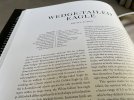Absolutely not a photographic bone in my body, but after half a dozen flights with my MPP I'm pretty keen to learn. I've even started a YT channel just so I can watch my vids and learn some video editing.
I've got exclusive access to thousands of acres of privately owned wetlands to practice on, with lots of colors and wildlife. Full permission and blessing, but I've promised to make the owner (my neighbor) a nice video of the property.
I got a new and unused MPP at a reasonable price. I've flown LOS hobby drones before and lots of fixed wing, but never with GPS and this kind of camera gear on board. It's been a shock how well it all works.
Basically I've used Filmora to make this first video, and hopefully uploaded it as it was shot without any post editing or whatever. It's not a good comparison, as one day was a little cloudy and the next bright sunlight, but already I can see the importance of white balance.
I'm in Australia, so I'm hoping to get a fairly basic set of parameters for bright sunlight, and if it's a bit cloudy I can drop from an ND16 to an ND8 for those same settings... is that how it works?
I think the "sunny sky" setting was 6600 kelvin, but I'm wondering if dropping that a bit lower would make the blue sky and greens a bit stronger in the setting shown in the video. Turning/panning is looking a bit "pixelly", and I've read about setting an ISO/shutter speed ration of about 2:1 or something like that to give it a softer blur or something. I'd like to stick with 4K, as I don't care about file size or upload times. I'd just like to get beautiful footage.
Please tell me where to go from here (and thank you for your help):
I've got exclusive access to thousands of acres of privately owned wetlands to practice on, with lots of colors and wildlife. Full permission and blessing, but I've promised to make the owner (my neighbor) a nice video of the property.
I got a new and unused MPP at a reasonable price. I've flown LOS hobby drones before and lots of fixed wing, but never with GPS and this kind of camera gear on board. It's been a shock how well it all works.
Basically I've used Filmora to make this first video, and hopefully uploaded it as it was shot without any post editing or whatever. It's not a good comparison, as one day was a little cloudy and the next bright sunlight, but already I can see the importance of white balance.
I'm in Australia, so I'm hoping to get a fairly basic set of parameters for bright sunlight, and if it's a bit cloudy I can drop from an ND16 to an ND8 for those same settings... is that how it works?
I think the "sunny sky" setting was 6600 kelvin, but I'm wondering if dropping that a bit lower would make the blue sky and greens a bit stronger in the setting shown in the video. Turning/panning is looking a bit "pixelly", and I've read about setting an ISO/shutter speed ration of about 2:1 or something like that to give it a softer blur or something. I'd like to stick with 4K, as I don't care about file size or upload times. I'd just like to get beautiful footage.
Please tell me where to go from here (and thank you for your help):












